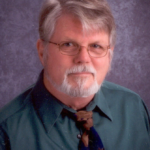 by Brandon DeBritz
by Brandon DeBritz
A Junior High STEM Exploration into Hydroelectric Energy with the use of the PowerWheel
When we talk about electricity and where it comes from in the Pacific Northwest, hydroelectric energy production is a key source and natural opportunity for teaching. Part of the curriculum used in the South Kitsap School District in Port Orchard, WA is SEPUP ‘Weathering and Erosion’. Students explore the Earth processes of weathering, erosion, and deposition all the while considering where to expand residential development in an expanding fictional town along the northwest coast.
This year, students at Cedar Heights Junior High were presented with a new factor to consider for this situation, ’should we build a dam on the town’s river to provide energy for the expanding electrical needs of the city?’ This new situation opened the door for a STEM unit, ‘The Energy of Moving Water’ from the National Energy Education Development (NEED) Project (free teacher and student curriculum guides are available from their website www.need.org).
From this platform, students were engaged in activities and research to explore: what electricity is and how it is created, the designs of a hydroelectric dam and how they work, as well as many of the environmental, economic, social, and political issues around the construction and use of dams. Through a school partnership with RB Industries and the PowerWheel, students explored the fundamental elements of creating electricity through the transfer of moving water.



 Posted by Tami O'Connor
Posted by Tami O'Connor  by: Tami O’Connor
by: Tami O’Connor by: Jim Fiddes
by: Jim Fiddes